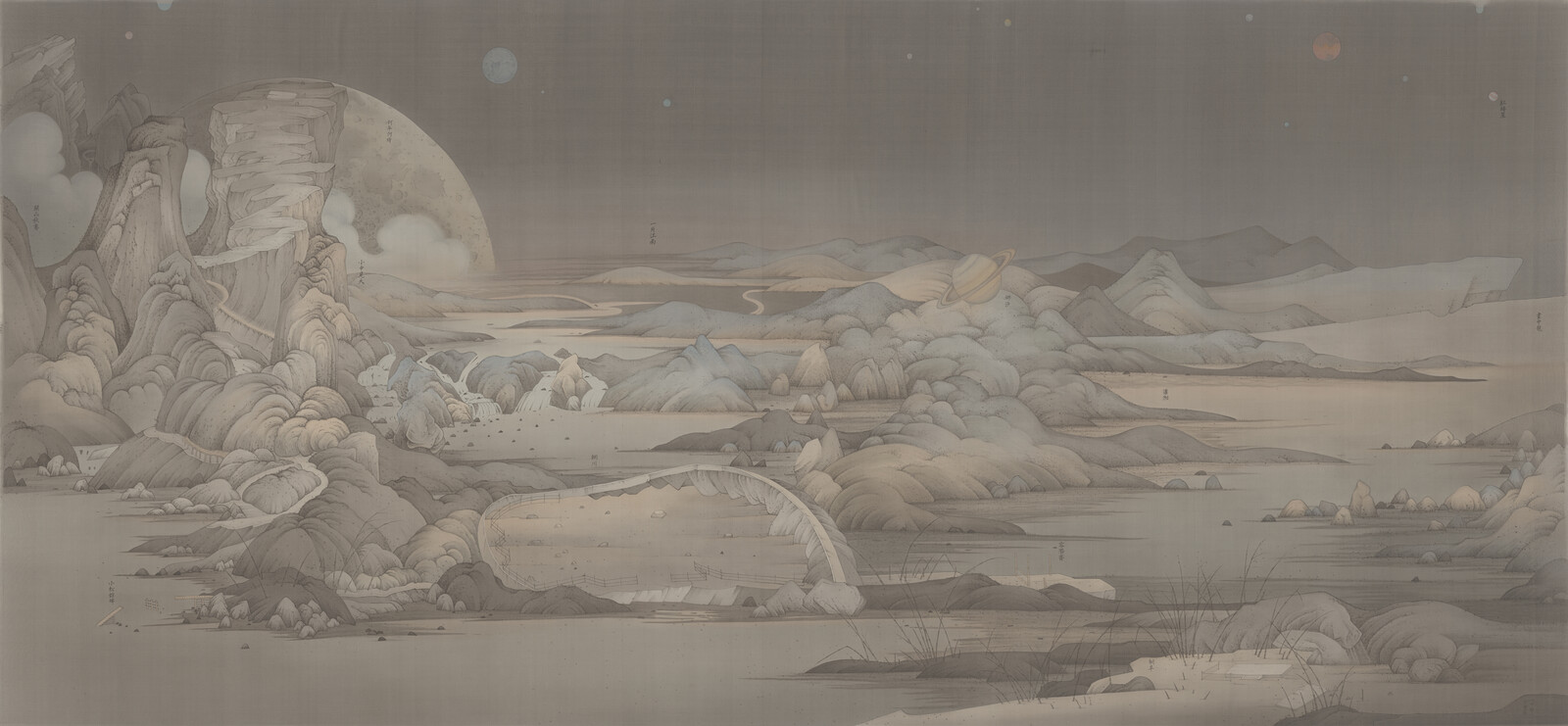Eight Views of Xiaoxiang
November 4, 2016–January 8, 2017
798 Art District
No. 4 Jiuxianqiao Road, Chaoyang District
100015 Beijing
China
Hours: Monday–Sunday 10am–7pm
T +86 10 5780 0200
Until January 8, 2017, the Ullens Center for Contemporary Art (UCCA) presents Hao Liang: Eight Views of Xiaoxiang, the artist’s first institutional solo show. The exhibition showcases a new cycle of eight large (387 x 184 cm) compositions in ink on silk that depict the titular location in central China, using each image to explore the dramatic sublime of the contemporary ecological landscape. Hao Liang (b. 1983, Chengdu) bases his work on research into the literature, aesthetics, and scholarship of Chinese antiquity, seeking to revive a genre and its material artistry, and imbue it with a modern sensibility. The paintings are hung in recessed vitrines, a method often reserved for delicate and ancient works that here furthers a dialogue with the heritage of Chinese painting.
Xiaoxiang is located in Hunan where the Xiang River meets Dongting Lake. However, the motif of the Eight Views of Xiaoxiang transcends the mere depiction of a particular natural landscape, variously reinterpreted by artists from China, Japan, and Korea. Since the 10th century, the motif has inspired painters including Dong Yuan (934-962 CE), Song Di (1015–1080), Muqi (d. 1281), An Gyeon (b. 1400), Sōami (d. 1525), Wen Weiming (1470–1559), and Kano Shoei (1519–1592). Through research into Chinese and Western antiquity, Hao Liang assumes the role of so many scholars before him, hermeneutically reinterpreting the Eight Views of Xiaoxiang with a modern eye and appropriating classical forms to develop his own stylistic language.
For Hao Liang, the painting surface is not simply a material embodiment of space and time, but a medium for contemplations of such. Diverging from the principles of both traditional Chinese painting and linear perspective, the artist relies on composition, modeling, color, and variations in light and shadow to produce multiple perspectives within each canvas, portraying space and time as unstable and non-linear. In Eight Views of Xiaoxiang—Myriads of Transformations, Hao Liang depicts the passage of autumn into winter just after a heavy rainfall, creating a multifarious impression of natural transformation. Multiple perspectival relationships link the lake, river, mountains, clouds, and other imagery into a flattened space, while bamboo, a traditional painterly motif, obstructs the viewer’s wandering gaze. Similarly, Eight Views of Xiaoxiang—Mind Travel combines the forms of a flat geographical map and a shanshui landscape. Through the warping of space and juxtaposition of climates, the abstracted composition demands a more contemplative way of looking that eschews any literal understanding of time or space.
Hao Liang appropriates both visual and textual references to more broadly explore painting as a historical mode and the potential of traditional elements. In Eight Views of Xiaoxiang—Relics, what begins as a classical emulation becomes an art historical atlas, using imagery and text to represent different iconographic periods in Chinese painting, including the modern, and express an intertextuality between past, present, and even future. Yet the artist’s historical considerations are not limited to form and subject; by exploring the relationship between scholar-painter and landscape, Hao Liang also reflects on the worldviews manifest in these painterly traditions. His work acts as both a contribution to this continuously evolving visual thematics and an answer to the question of contemporaneity in Chinese painting.
Hao Liang: Eight Views of Xiaoxiang is curated by UCCA Director Philip Tinari and Assistant Curator Yanlin Pan, and designed by Ouyang Kunlun and Re-Box Architecture and Interior Design. The exhibition is accompanied by a bilingual publication, which includes essays by Philip Tinari, Yanlin Pan, independent curator Sun Dongdong, and an interview between Philip Tinari and Hao Liang. Hao Liang: Eight Views of Xiaoxiang is sponsored by ti Art Foundation. The exhibition publication is supported by the H2 Foundation for Arts and Education Limited.

